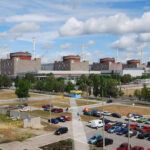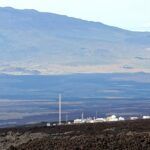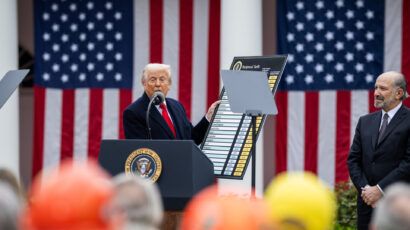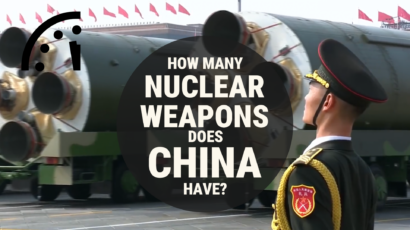After the nuclear renaissance: The age of discovery
By Alexander Glaser | March 17, 2011
It will take time to grasp the full impact of the unimaginable human tragedy unfolding after the earthquake and tsunami in Japan, but it is already clear that the proposition of a global nuclear renaissance ended on that day.
Before the Fukushima disaster, nuclear power had gradually begun to enjoy more widespread support. Facing unprecedented climate change, even to some skeptics it seemed a lesser evil. This shift was possible as the Chernobyl disaster slowly began to fade away as a distant memory, which in any event — so the argument went — had been caused by a flawed reactor design. Optimists were able to point out that roughly two-thirds of the total nuclear electricity generated since the beginning of the nuclear era was produced after Chernobyl and more than 80 percent was produced after the 1979 “near-miss” Three Mile Island accident.
Many chose to believe that the right lessons had been learned. Reactor design and safety had matured, operators were better-trained, nuclear regulators more watchful, and catastrophic accidents were simply not going to happen. Severe accident probabilities of “once in one hundred thousand years” really meant “never.” Fukushima has proven these assumptions wrong; and it will have a number of implications for the energy debate.
Life-extensions. The existing nuclear reactors in the United States — and in other countries that are major users of nuclear power — are reaching the end of their original 40-year lives. The only way to maintain the share of nuclear electricity production in the short-term is to extend the lives of theses reactors by another 20 years or more. Given the known safety limits of these first-generation reactors (similar to the ones involved in the Fukushima accident), these life-extensions are essentially anathema now. In the case of the United States, this could mean that some old plants may have to be closed down before the first new ones can possibly come online.
Safety of future reactors. With regard to new-build, the Fukushima accidents are likely to change the way we think about nuclear accidents and how their likelihood and potential consequences are captured in the licensing process. In the past, regulators have accepted the distinction between “design-basis” accidents and “beyond design-basis” or severe accidents, which were then often qualified as purely hypothetical events. Even though it is impossible to predict what the central arguments of the coming nuclear-safety debate will be, simply arguing for more redundancy and additional safety features for existing designs may not prove sufficient to ensure continued public and political support. The debate will center on the question of whether or not the public is willing to accept the mere possibility of catastrophic accidents that can lead to a large-scale release of radioactivity; and the answer may well be “No.”
The public may ask for reactor designs that cannot experience core meltdowns even under extreme conditions as witnessed in Japan, i.e., a complete loss of cooling during an extended power blackout. This and other considerations could also bring to the center of attention fundamentally different approaches to nuclear power such as underground construction or much smaller reactor units (with respectively lower radioactive inventories). Ultimately, of course, such considerations may well push the economics of nuclear power over the edge.
Nuclear power and climate change. Finally, and perhaps most importantly, the Fukushima accidents are likely to shift the balance in the debate on climate change and the risks and benefits of nuclear power. This could be particularly true for “newcomer” countries, which have only recently started thinking about building their first reactors, or for those countries that have been sitting on the nuclear fence for the past few years. In these cases, walking away from the nuclear option would appear relatively easy and come at little cost. It is likely to be true also for a number of Western European countries, including Switzerland, Italy, Spain, the Netherlands, the United Kingdom, and some others — all of which so far have had ambiguous policies with regard to future nuclear power use and are expected to face a dramatic shift of public opinion in response to this accident. Unsurprisingly, the most drastic response came from Germany, which is likely to reinstate its nuclear phase-out policy and may in fact accelerate the original schedule: Seven out of seventeen reactors will be temporarily shutdown later this month and at least one of them will remain permanently closed. Similarly, once Japan recovers from the unfolding earthquake disaster, it will produce its electricity without some of its nuclear power plants.
As a result of all this, in the longer term, some national carbon footprints will rise somewhat more than they otherwise would have done. A number of countries may ask for a carbon “buffer” or credit, given their new restraint in deploying nuclear power. For others, it may open for the first time the question of how we came to live as risk-societies, and how we can better organize our economies and our relationship to the future.
Together, we make the world safer.
The Bulletin elevates expert voices above the noise. But as an independent nonprofit organization, our operations depend on the support of readers like you. Help us continue to deliver quality journalism that holds leaders accountable. Your support of our work at any level is important. In return, we promise our coverage will be understandable, influential, vigilant, solution-oriented, and fair-minded. Together we can make a difference.
Topics: Climate Change, Nuclear Energy, Opinion















